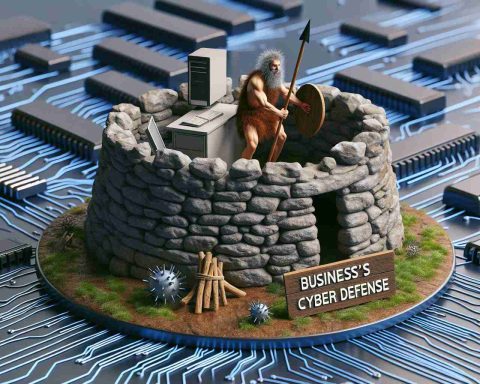Understanding the Concept of Blockchain
When you hear the term blockchain, it’s almost impossible to avoid the hype surrounding it. This fascinating technology has become a buzzword, often associated with cryptocurrencies like Bitcoin. Yet, many people are left in the dark, unsure of what it truly entails.
At its core, blockchain is a decentralized digital ledger that records transactions across multiple computers. This system ensures that the information is secure, transparent, and immutable. When a transaction is made, it is bundled with others into a “block.” Once this block is filled, it gets added to a chain of previous blocks—hence the name blockchain.
What sets blockchain apart is its ability to function without a central authority. This decentralization means that no single party controls the network, promoting trust among users. Each participant holds a copy of the full ledger, providing unparalleled public access.
The technology’s applications stretch beyond cryptocurrencies. Industries such as supply chain management, healthcare, and finance are exploring blockchain to enhance transparency and reduce fraud. As understanding of blockchain grows, its potential to transform various sectors becomes increasingly evident.
In a world where data security is paramount, blockchain emerges as a groundbreaking solution, making it a topic worth exploring further.
Broader Implications of Blockchain Technology
The rising prominence of blockchain technology heralds significant shifts across societal, cultural, and economic landscapes. As this decentralized ledger gains traction, its potential to reshape industries extends beyond finance, impacting supply chains, healthcare, and even public governance. For instance, in developing nations, blockchain can enhance transparency in governmental processes, enabling citizens to hold officials accountable, a novel aspect promising to strengthen democratic ideals.
Moreover, blockchain’s capacity to streamline operations suggests profound implications for the global economy. It could foster a more efficient marketplace by reducing transaction costs and increasing speed. For instance, remittance fees could plummet, benefiting millions of migrant workers who send money back home. The accessibility blockchain offers could also lead to greater financial inclusion, empowering unbanked populations worldwide to participate in the global economy.
However, as we embrace this innovation, considerations regarding environmental sustainability arise. The energy-intensive nature of some blockchain mechanisms, particularly proof-of-work systems, has drawn criticism. This trend underscores the urgent need for advancements in energy-efficient consensus algorithms that could mitigate the environmental footprint associated with blockchain technologies.
Looking forward, the integration of blockchain into everyday life seems inevitable, paving the way for a future characterized by enhanced trust, security, and efficiency. As we navigate this transition, it is crucial to remain vigilant of both the opportunities and challenges that lie ahead.
Unlocking the True Potential of Blockchain: Beyond Cryptocurrency
Understanding the Concept of Blockchain
In recent years, the term blockchain has become synonymous with cryptocurrency, notably Bitcoin. However, the significance of blockchain technology transcends digital currencies, promising a transformative impact across numerous industries.
At its heart, blockchain is a decentralized digital ledger designed to record transactions across a network of computers securely. When a transaction occurs, it is grouped into a “block” with other transactions. Once the block reaches its capacity, it is added to a chain of previously confirmed blocks, creating an immutable and transparent record.
One of the key features of blockchain is its decentralization, which eliminates the need for a central authority. This ensures that no single entity controls the network, fostering increased trust and participation among users. Each participant maintains a complete copy of the ledger, promoting transparency and security.
Applications of Blockchain Technology
While blockchain is often associated with cryptocurrencies, its applications extend far beyond financial transactions:
1. Supply Chain Management: Companies are utilizing blockchain for tracking products through their journey, enhancing transparency, and minimizing fraud. With real-time data access, stakeholders can verify the authenticity of goods and ensure compliance with regulations.
2. Healthcare: Patient records can be securely stored and shared among healthcare providers using blockchain, ensuring data integrity and privacy. This allows for seamless coordination of care and improved patient outcomes.
3. Finance and Banking: Blockchain is streamlining payment processing and reducing costs by eliminating intermediaries, thus accelerating transaction speeds. It also enhances security in identity verification and fraud prevention.
4. Smart Contracts: Automated contracts execute transactions when predefined conditions are met, which reduces the risk of human error and speeds up contractual processes across numerous sectors.
Pros and Cons of Blockchain Technology
Pros:
– Security: Enhanced data security through cryptographic techniques.
– Transparency: All parties have access to the same data, promoting accountability.
– Reduced Costs: Minimization of intermediaries lowers transaction fees.
– Enhanced Efficiency: Faster transactions and reduced processing times.
Cons:
– Scalability Issues: Current blockchain networks may face challenges as they grow, impacting transaction speed.
– Energy Consumption: Proof-of-work blockchains require substantial energy, leading to concerns over sustainability.
– Regulatory Uncertainty: Varying regulations across jurisdictions can hinder adoption.
Current Trends and Future Predictions
The blockchain space is constantly evolving. Innovations like layer 2 solutions (e.g., Lightning Network) aim to tackle scalability issues, while decentralized finance (DeFi) platforms are reshaping traditional financial models. Predictions for the coming years suggest that blockchain will become integral to various sectors, driving efficiency and innovation. The focus on sustainability is expected to spark more environmentally friendly consensus mechanisms, like proof-of-stake.
Limitations and Security Aspects
Despite its promise, blockchain technology faces limitations that must be addressed for broader adoption. Security is paramount; while the decentralized nature provides some protection, vulnerabilities like 51% attacks can compromise networks. Continuous improvements in security protocols and user education are essential for maintaining trust in this technology.
Conclusion
As the understanding of blockchain technology deepens, its potential to revolutionize various industries becomes undeniable. With ongoing innovations and a focus on overcoming challenges, blockchain may likely define the next wave of digital transformation.
For more insights into blockchain and its myriad applications, visit Blockchain.com.











